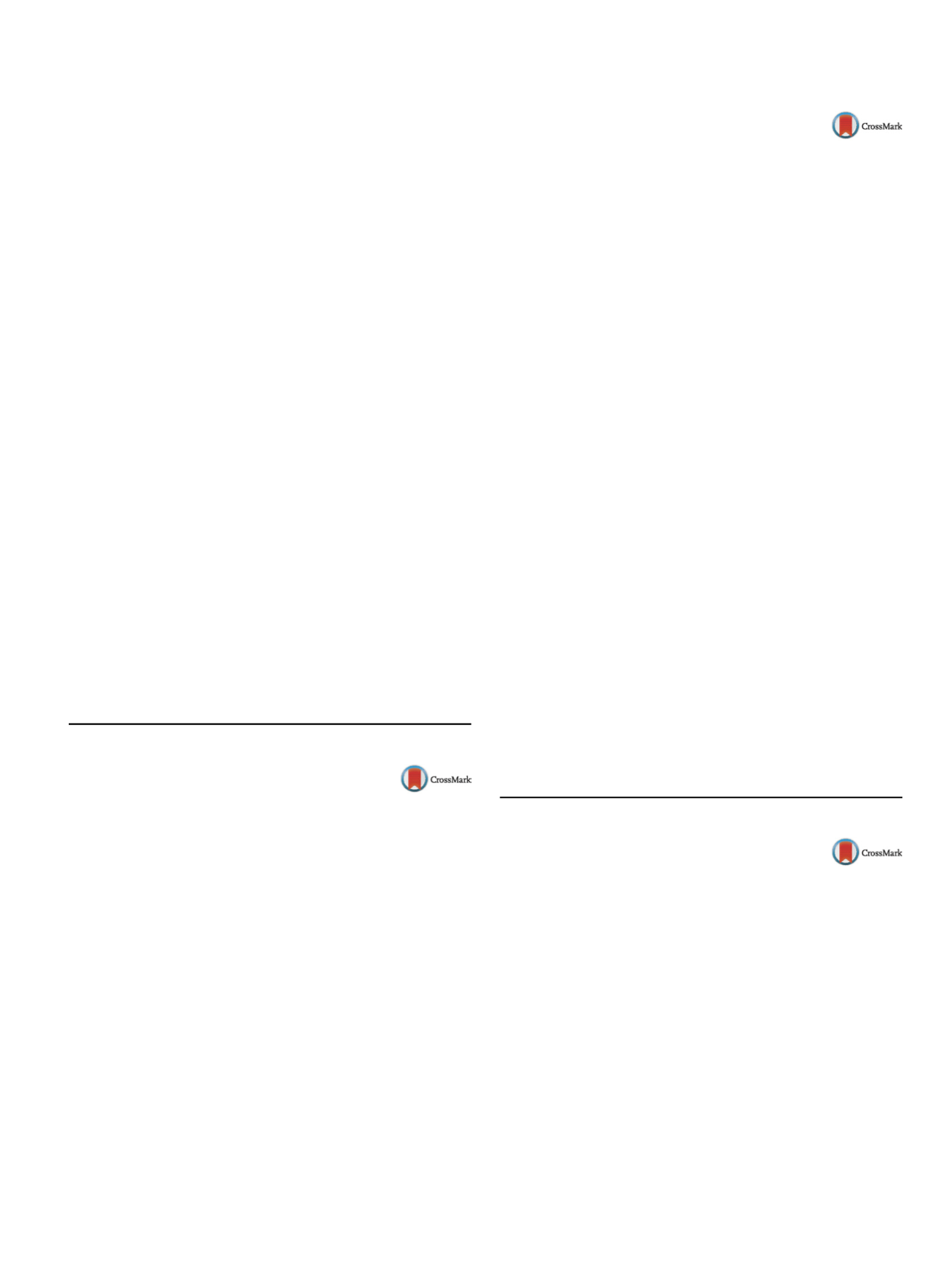

25th European Congress of Psychiatry / European Psychiatry 41S (2017) S8–S52
S21
Introduction
The use of patient-reported outcome measures in
psychiatric practices in the United States is still in its beginning
phases. More research is need to determine the usefulness of such
measures and the optimal methods to present them to patients and
practitioners in routine care settings.
Objectives
This presentation will describe the research plan for
testing a group of patient-reported outcome measures using digital
applications. Potential opportunities for use in underserved refugee
populations will be presented.
Methods
The outcome measures were selected from those rec-
ommended in DSM-5 Section III, including cross-cutting symptom
and disability measures. A user-friendly digital application was
developed for data collection, synthesis, and presentation. The
research plan has three phases: focus groups with patients and
clinicians, piloting of methods, and the main study, a pragmatic
trial comparing treatment outcomes using outcome measurement
versus usual care.
Results
Results of the focus group sessions will be presented,
along with changes made to the measures and the digital appli-
cation in response to these results. Current status of the research
project will be discussed.
Conclusions
The results of this research project will bring greater
clarity to questions on the role of outcome measurements in
improving quality of care and patient outcomes. With ever greater
use of smart phones, tablets, and personal computers, digital tech-
nology has the potential to facilitate psychiatric assessment and
treatment for underserved, difficult-to-reach populations such as
refugees.
Disclosure of interest
The authors have not supplied their decla-
ration of competing interest.
http://dx.doi.org/10.1016/j.eurpsy.2017.01.117Symposium: psychiatric care in Europe for people
with intellectual disabilities: how to prevent
abusive practices
S044
Mental health and social care
regulation in Ireland: New ethical
perspectives
P. Dodd
St. Michael’s House/university college Dublin, psychiatry, Dublin,
Ireland
This talkwill outline the regulatory framework (bothmental health
and social care) currently in place in Ireland for people with intel-
lectual disability (I.D.) and mental health problems, in the context
of the varied nature of available mental health services. As not
all aspects of service are currently under the regulatory system,
potential ethical issues arise, and will be discussed.
In addition new legislation regarding the support of people with
vulnerable decision making capacity will be outlined (Assisted
Decision Making (Capacity) Act, 2015); potential ethical issues that
are currently arising from this legislation will be explored and dis-
cussed.
Disclosure of interest
The author has not supplied his declaration
of competing interest.
http://dx.doi.org/10.1016/j.eurpsy.2017.01.118S045
Can positive community practice
models help prevent abuse?
I. Hall
1 ,∗
, N. O’Kane
21
East London NHS foundation trust, community learning disability
service, London, United Kingdom
2
Camden and Islington NHS foundation trust, camden learning
disability service, London, United Kingdom
∗
Corresponding author.
All different types of abuse can happen to people with intellectual
disabilities living in community setting. This can include physical
abuse, including the use of restrictive practices, financial abuse by
strangers but also by family and carers. They can also be victim
to sexual abuse. Neglect is a relatively common concern, which is
perhaps more likely in the community compared to institutional
settings.
In this presentation we will discuss the fundamental balancing act
between paternalism an autonomy that is so often an issue when
supporting people with intellectual disabilities in the community,
and how to decide where to draw the line in individual cases.
We will consider a range of examples to illustrate this, including
unlawful deprivation of liberty, people choosing life partners that
others regard as unsuitable, why families might restrict access to
services, and whether giving people more control over their care
through direct payments and individual budgets can lead to finan-
cial exploitation.
Finally we will discuss potential solutions to preventing abuse
including robust Safeguarding procedures, integrated working
between health and social services, a program of Positive Behav-
ioral Support, maximizing communication, promoting access to
health and the recognition of mental health problems, how to dis-
seminate training, and the importance of advocacy and regular
review.
Disclosure of interest
The authors have not supplied their decla-
ration of competing interest.
http://dx.doi.org/10.1016/j.eurpsy.2017.01.119Symposium: impulsivity, compulsivity, and
behavioural addictions
S046
Common neural networks between
ocd and behavioural addictions: Is ocd
a behavioral addiction?
G. Grassi
1 ,∗
, S. Pallanti
21
Universisty of Florence, Neurofarba, Florence, Italy
2
University of Florence, Neurofarba, Florence, Italy
∗
Corresponding author.
The stereotypical portrait of an obsessive–compulsive patient is
an excessively self-controlled, risk aversive individual that acts
in order to avoid potential loss or punishments. Although this
portrait fits well with several clinical studies showing increased
harm-avoidance in obsessive–compulsive disorder (OCD), more
recent clinical, neuropsychological and neuroimaging studies chal-
lenged this idea and described a different portrait of OCD, showing
several commonalities between OCD and addictions such as
impulsivity, reward dysfunction and impaired decision-making.
The results of these studies conflict with the stereotypical OCD por-
trait of doubtfulness and risk-aversiveness. In fact, these findings
are prototypical for addiction and have led some authors in the last
years to view OCD as a behavioral addiction. In our recently pub-
lished article, we investigated the behavioral addiction model of


















